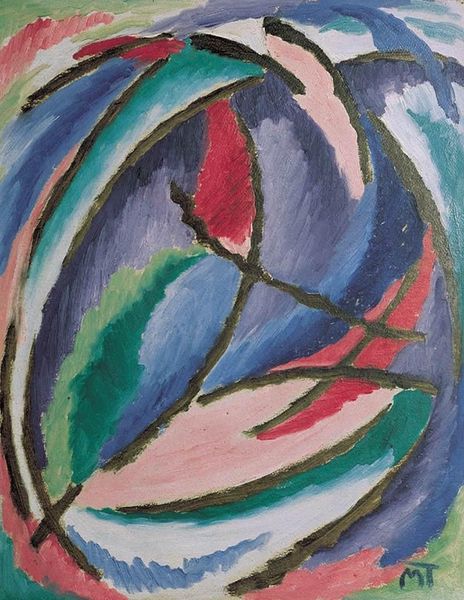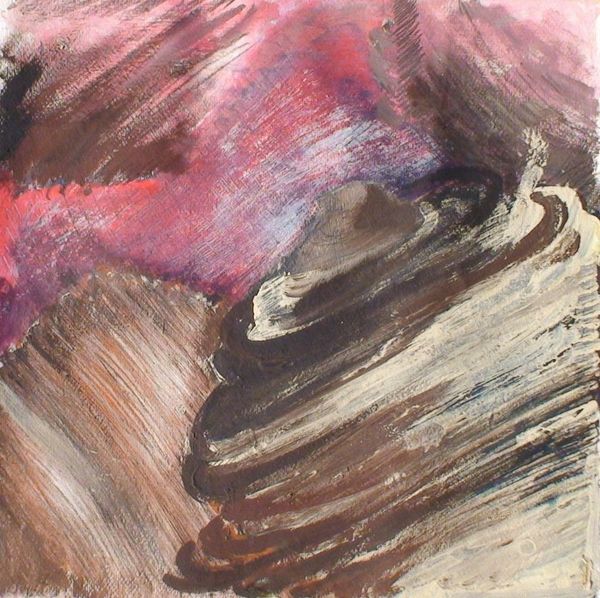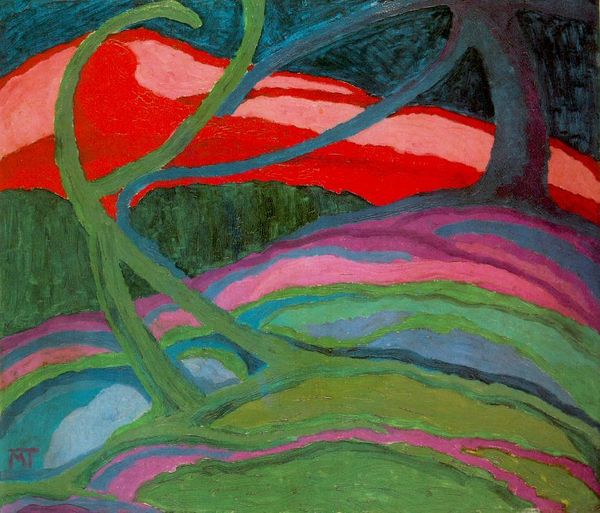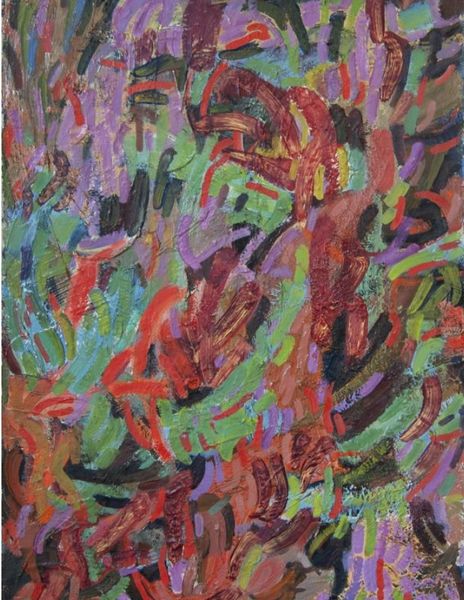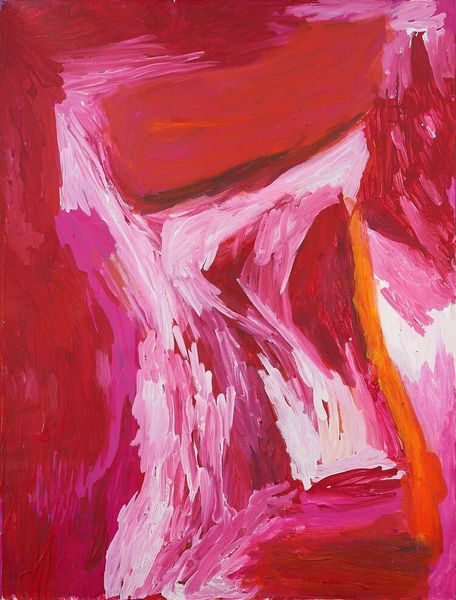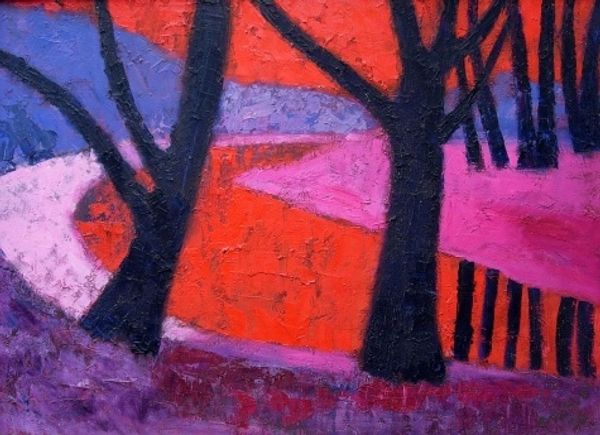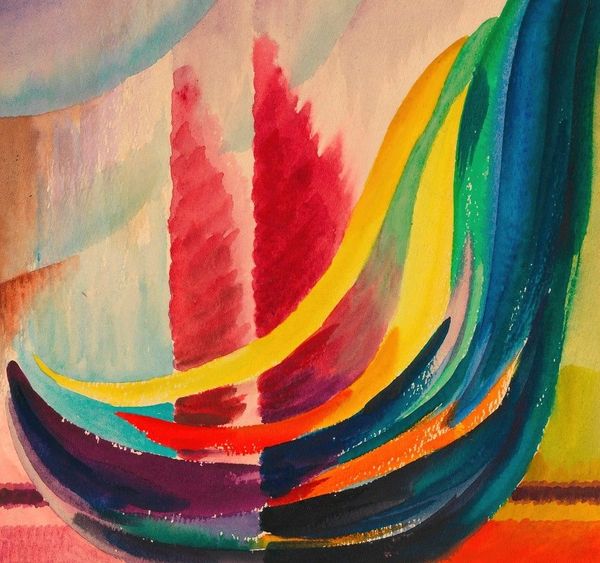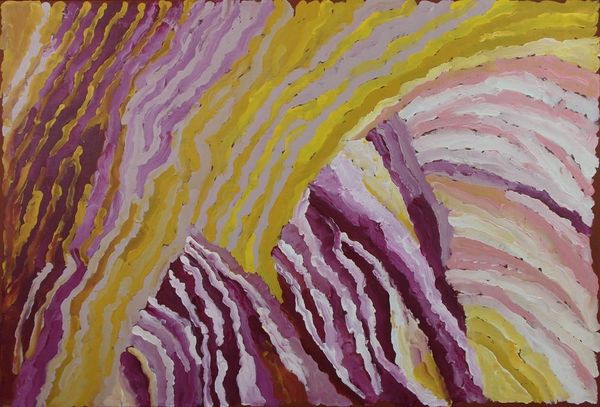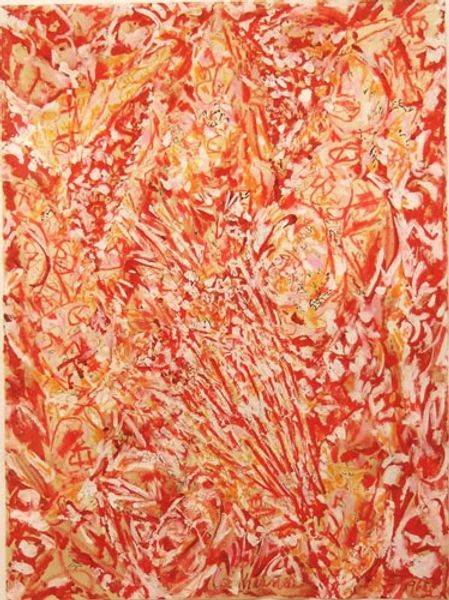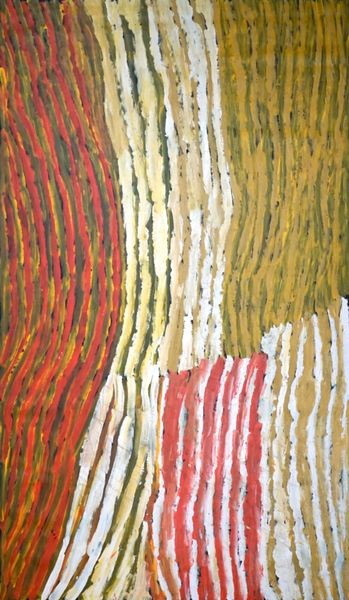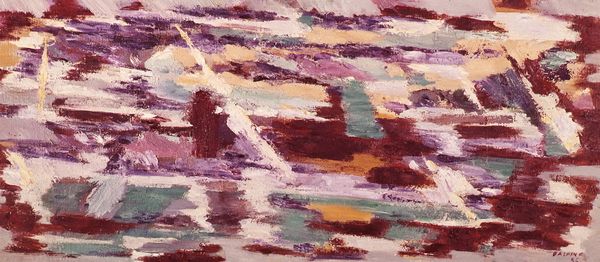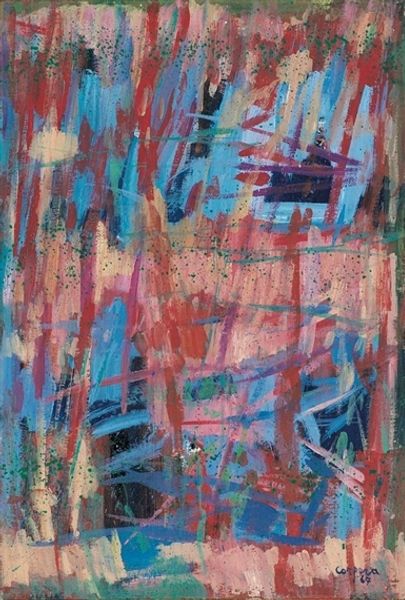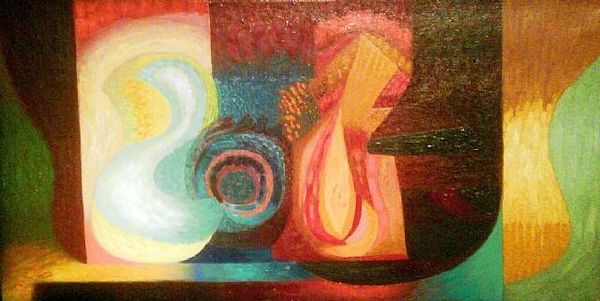
ink
#
natural stone pattern
#
rippled sketch texture
#
naturalistic pattern
#
abstract painting
#
wave pattern
#
ink
#
abstract pattern
#
pink
#
organic pattern
#
flower pattern
#
paint stroke
#
swirly brushstroke
Copyright: Public domain US
Editor: We’re looking at "Red Landscape," an ink work from 1918 by János Mattis-Teutsch. I’m immediately struck by the almost overwhelming use of red, and how the abstract shapes suggest, but don't quite define, a scene. What do you see when you look at it? Curator: Formally, the painting employs a limited palette, which enhances the impact of its tonal variations. Notice how the composition relies on curvilinear forms to create depth, though the space remains deliberately ambiguous. Consider the brushwork as well—its application lends a rhythmic quality to the surface. Editor: Rhythmic, definitely. Almost like a heartbeat, or maybe waves. What about the choice of ink? Does that say something about Mattis-Teutsch's intentions? Curator: Ink, as a medium, invites both fluidity and precision. Here, the artist uses it to generate a sense of movement within a highly structured pictorial space. The apparent spontaneity is carefully controlled, yielding a calculated tension between order and chaos. Do you find the tension to be effective? Editor: Yes, actually. It keeps me looking, trying to resolve the image in my mind. So, focusing just on the visual elements, would you say the title "Red Landscape" is almost misleading? Curator: Perhaps misleading is too strong a word. Instead, consider the title as a key – not to a literal depiction, but to an emotional landscape evoked through the artist's manipulation of color, form, and texture. Editor: That makes sense. I hadn't thought about the "emotional" landscape part. Thanks! Curator: A fruitful observation. It demonstrates how attending to the formal aspects of a work can open avenues for understanding its potential meaning.
Comments
No comments
Be the first to comment and join the conversation on the ultimate creative platform.
